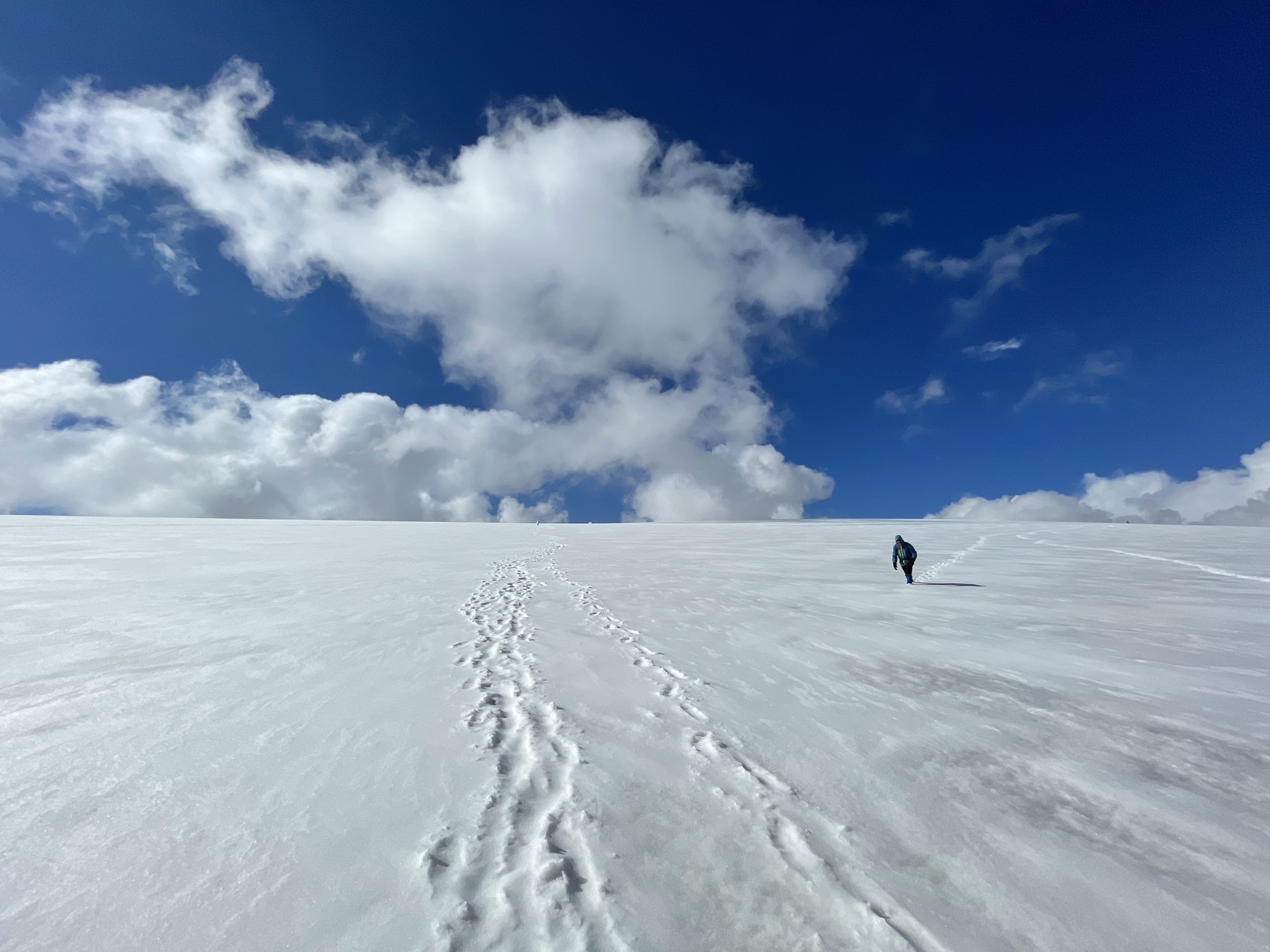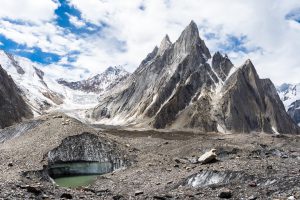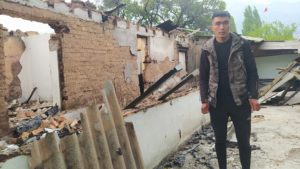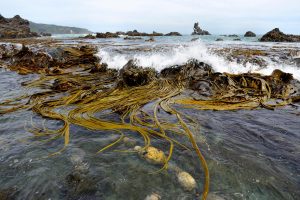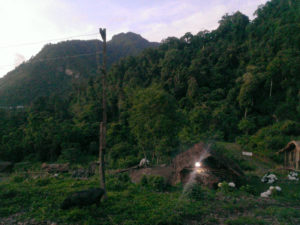The Tian Shan, or ‘Celestial Mountains’, are a 2,500-kilometre long mountain range in Central Asia. They straddle the border between China and Kyrgyzstan, and contain alpine meadows, rocky slopes and glaciers. The latter are a vital source of water for people and nature in an otherwise arid region – which means the glaciers of the Tian Shan are often referred to as Central Asia’s water tower.

But research indicates that climate change is rapidly warming these mountains.
This summer, Lander Van Tricht, a glaciologist studying the Tian Shan in Kyrgyzstan, visited the region. As part of his PhD, he is researching the current status of glaciers in the Kyrgyz part of the Tian Shan range – and how they might change in the future. The Third Pole spoke with him to find out what his trip revealed.
The Third Pole (TTP): What was the purpose of your trip to the Tian Shan region?
Lander Van Tricht (LVT): This was part of a project to estimate how the water supply in Kyrgyzstan will change due to climate change. Initially, my team is carrying out targeted studies on individual glaciers, including Ashu-Tor, Bordu, Golubin, Kara-Batkak and Sary-Tor. Eventually we will scale up to a regional study, taking all glaciers in the Kyrgyz Tian Shan into account.
The first part of our fieldwork this summer was at the Grigoriev ice cap. We measured the thickness of the ice on the glacier with a ground-penetrating radar and determined the surface elevation with the help of a drone and photogrammetry [using photographs to find out 3D information]. We camped for two weeks at the edge of the ice cap, hiking daily over the ice.
The surface elevation is the height of the glacier, comprising the height of the bedrock below plus the thickness of snow and ice. As the height of the bedrock does not change, we can find out how much snow and ice has melted by measuring the surface elevation at different times and comparing these. Obtaining an accurate surface elevation field of the glacier is also crucial as input in glacier modelling studies.
The second part of the fieldwork aimed to determine the surface elevation of the Bordu, Sary-Tor and Davydov glaciers using a drone. This information is needed to calculate the glacier-wide mass balance – the difference between accumulation and melting of the glacier. It is also used to monitor the frontal retreat of the glacier, and for modelling studies. To obtain this data, we worked with the Kumtor gold mine as these glaciers are located on the concession.
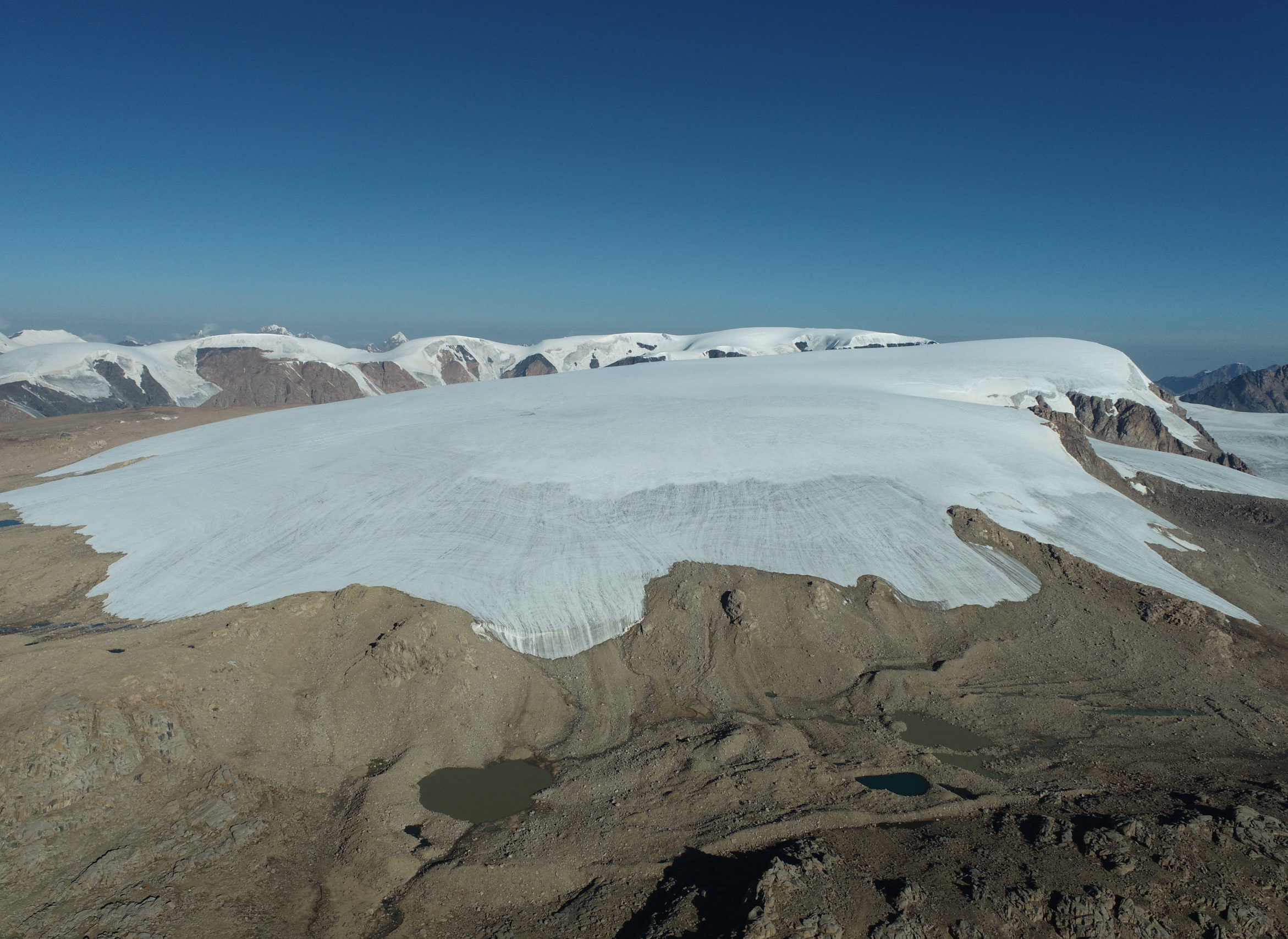
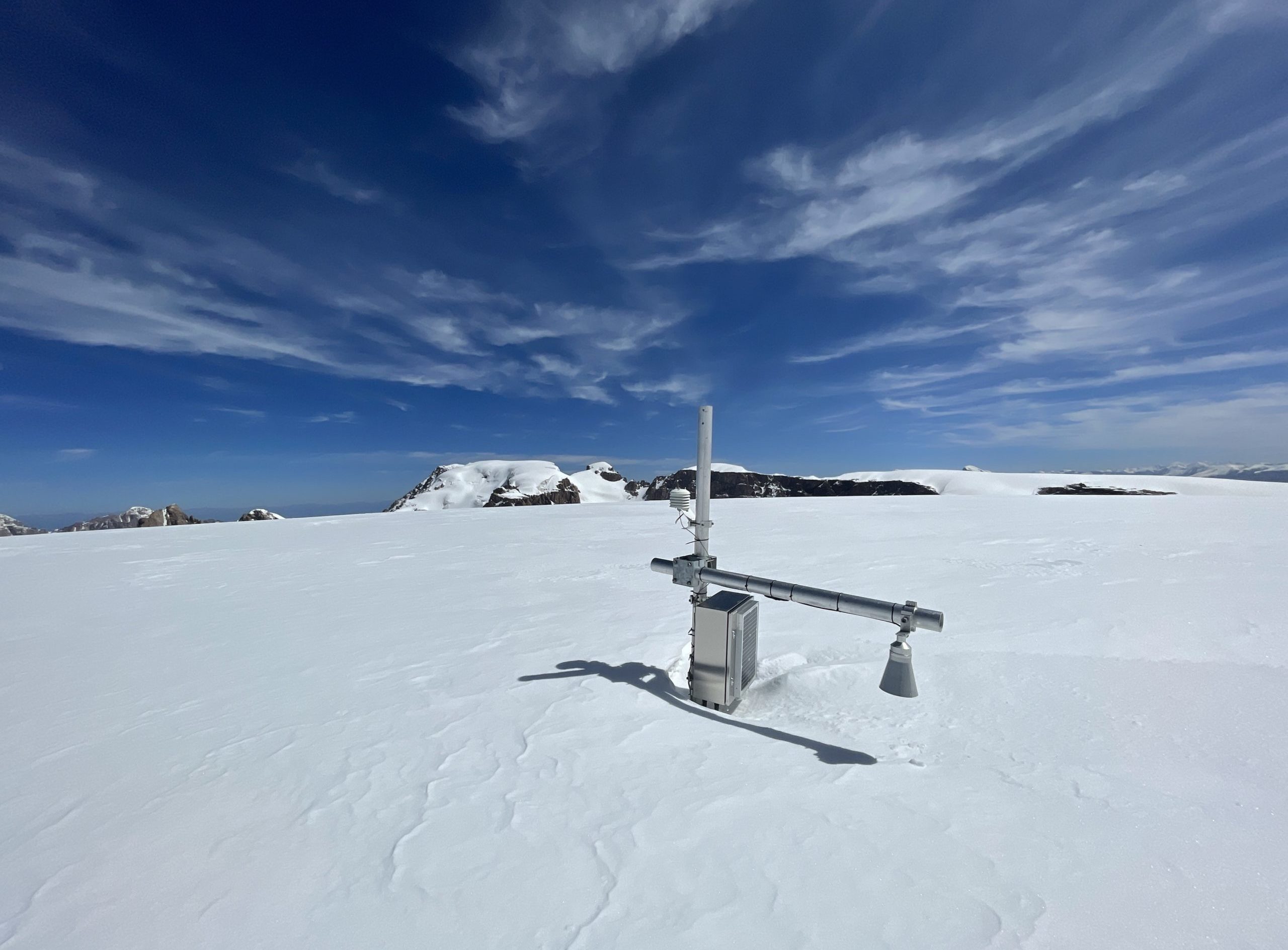
TTP: What is the state of the Tian Shan glaciers?
LVT: As in most mountain ranges, there has been a marked acceleration in glacier retreat and thinning in recent years in the Tian Shan. However, there are large regional differences between the different sub-areas of the Tian Shan. This makes the study of glaciers in this region particularly interesting.
Glaciers in the central Tian Shan, where we do most of our research, are especially sensitive to warmer springs and summers. Higher temperatures during this period induce more melting and an accompanying decrease in albedo. As well as this, the accumulation season for these glaciers extends mainly from March to June and is usually prolonged by summer snow fall, especially on the higher parts of the glaciers. If temperatures increase during this period, more of this precipitation will fall as rain rather than snow. This not only directly lowers the amount of accumulation, but also further increases melting by decreasing the surface albedo.
Accumulation is the process by which a glacier grows in its upper reaches, when the amount of snow that falls is greater than that which melts. This snow is eventually compacted into ice as part of the glacier.
Mass balance is the difference between the snow a glacier accumulates over the winter and the snow and ice that melts over the summer.
Albedo means how well a surface reflects the energy of the sun. White surfaces reflect solar energy and have a high albedo, whereas black surfaces absorb energy and have a low albedo.
The albedo effect of the Earth’s ice caps has a significant impact on global temperatures. Albedo measurements range between 0 and 1. The higher the albedo, the more solar radiation is reflected.
Mass balance measurements and remote sensing analysis (for example, using satellites to study glacier changes) show that the glaciers are completely out of balance. The increase in ablation (melting) is not compensated by an increase in accumulation, so the retreat is inexorably continuing.
TTP: It was reported that climate change triggered a severe drought in Central Asia this year. Was this visible in the Tian Shan mountains?
LVT: Upon arrival in the study area, we were told that it had been abnormally dry for a long time. We could observe this in the Arabel Valley, a high plateau at 3,500-3,700 metres above sea level. It is usually lush and green during the summer due to rain showers and meltwater from the surrounding glaciers.
This summer, however, the ground had completely dried out, and was hard and crusted. Also on the glaciers themselves we observed less snow than normal, although there were large local differences.

TTP: Do you have many partners on the ground who help with research into glaciers in the Tian Shan?
LVT: We cooperate with several partners for this project.
First, we work with the Tien Shan High Mountain Research Center. Every year, the research centre carries out mass balance measurements on different glaciers, under the leadership of Professor Victor Popovnin from the University of Moscow. They provide us with this data, so we can use them in our models and studies. They also help us with fieldwork – both with the measurements on the glaciers and by organising transport and accommodation. A crucial component is the horses they supply to transport our equipment to our base camp. It would be impossible to take all our materials to the glaciers ourselves.
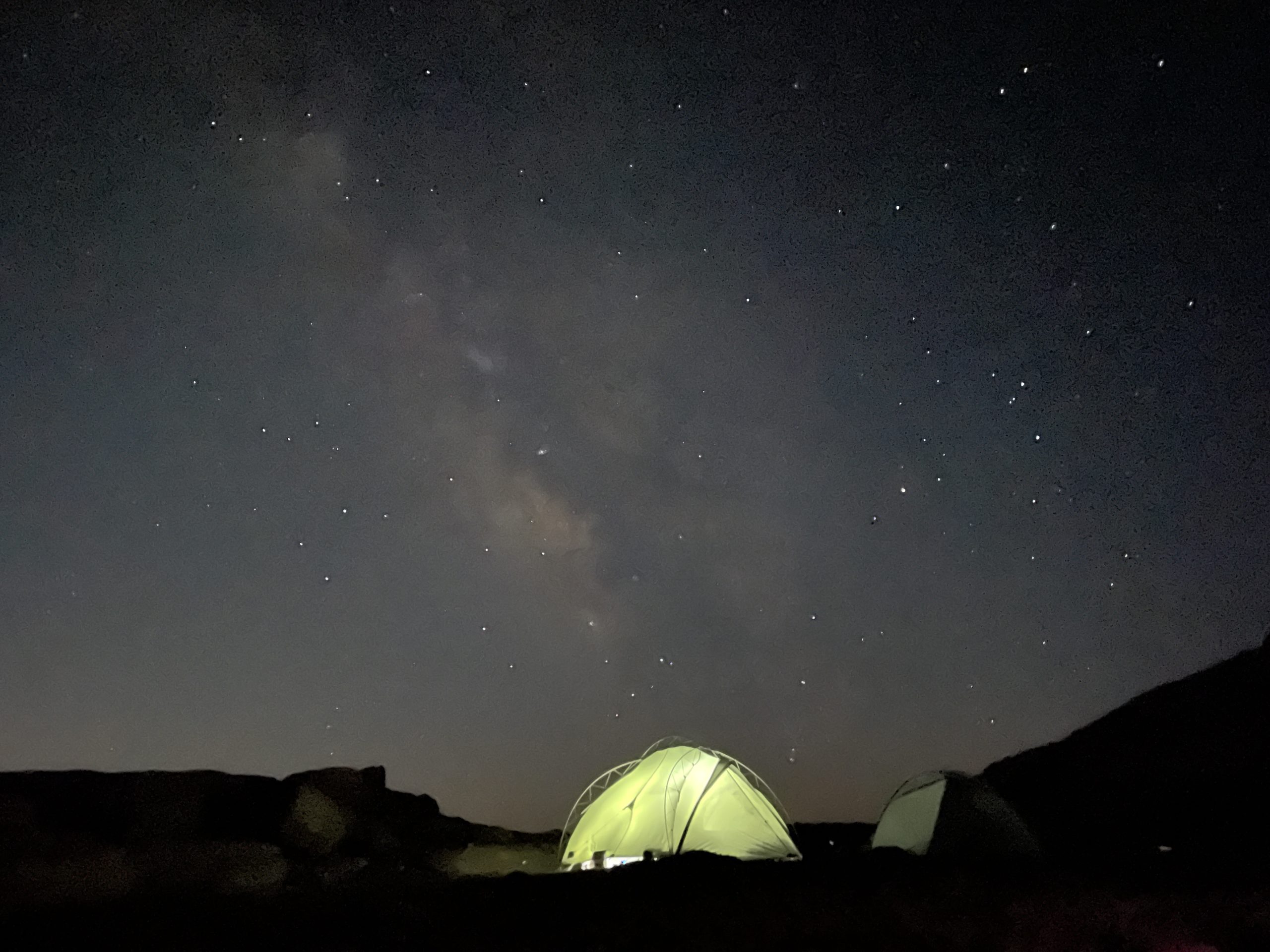
We also cooperate with the Kumtor gold mine. They provide accommodation, some of our food, and transport to the glaciers (which are on their concession). There is a weather station on the gold mining site; we use data from it in our mass balance models.
Our cooperation with Kumtor originates from their interest in monitoring on how the glaciers within the concession will evolve in the coming years or decades. In recent years the mining pit has been systematically expanded at the expense of the glaciers (mainly the Davydov glacier). If the mining activity were to stop now, it is unclear how the glaciers would evolve. Would the ice expand again or will climate change cause a rapid retreat?

Besides this, we work closely with several institutes and universities in Russia that help us to perform the mass balance measurements and support our fieldwork, as well as facilitate communication between us and the local partners.
TTP: What does the retreat of glaciers in the Tian Shan mean for local people and their livelihoods?
LVT: Glaciers in the Tian Shan are a crucial water source for the surrounding arid lowland areas. During dry periods in summer, almost 100% of the region’s water supply can originate from meltwater. Households, agriculture (due to irrigation), industry and electricity (through hydropower) all depend largely on meltwater from the glaciers.
People in Kyrgyzstan increasingly understand the importance of the glaciers, but there is still a lack of understanding of some important elements. In addition, it is not yet fully understood that even though climate change can induce a wetter climate in the mountains, this will have little effect on long-term water availability in the dry summer months. This is because the increased precipitation (mostly rain) will not provide enough glacial accumulation to counter the increasing melt rates.
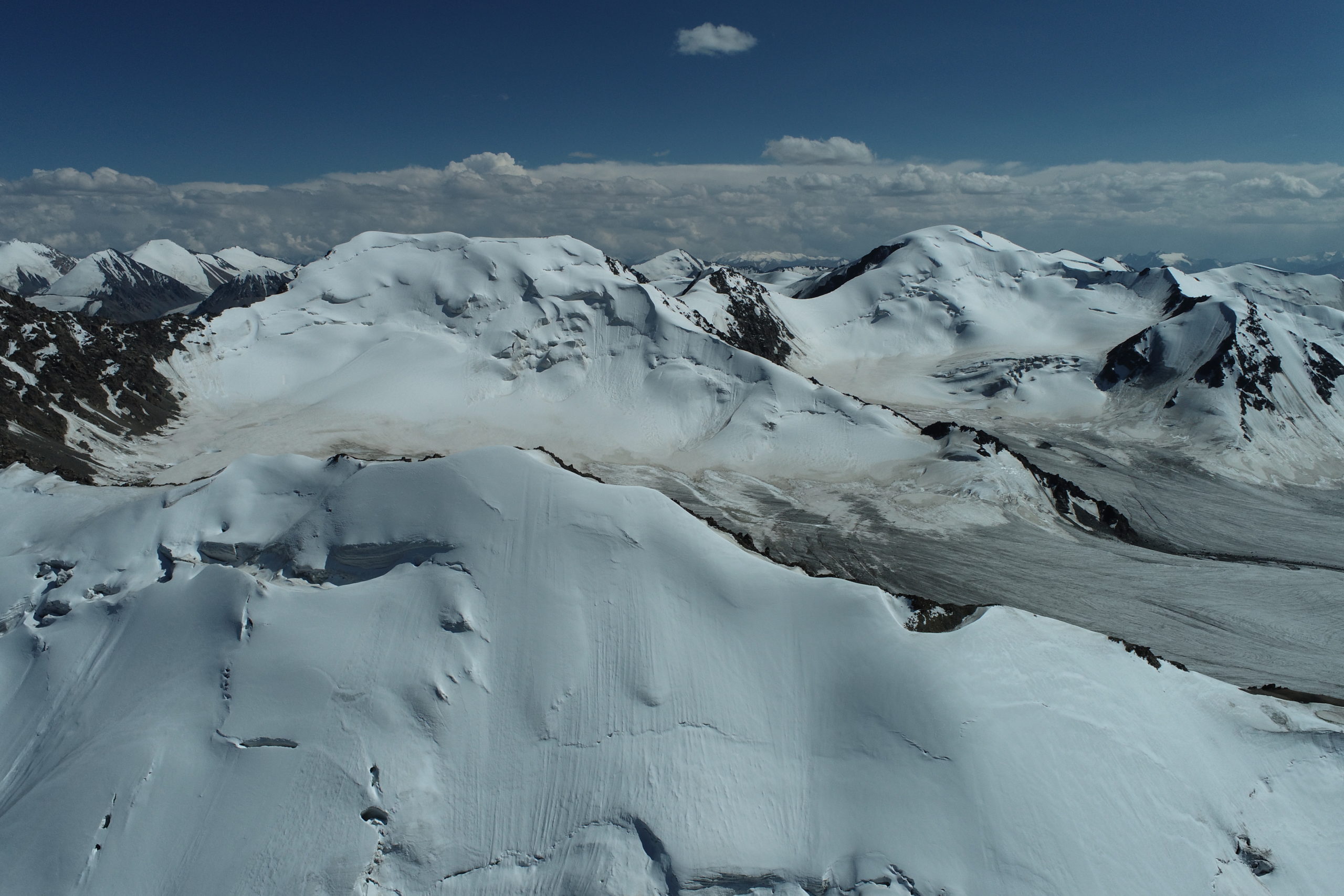
Indigenous people will be much more affected by the melting of glaciers in the Tian Shan because they are mainly semi-nomadic, and are very dependent on rivers and drainage in the otherwise dry plains or high mountains. Climate change and glacier retreat threatens specific mountain ecosystems and directly the people that depend on them for their livelihoods. Even more so because indigenous people in the region are very dependent on their large herds of cattle that need water and grass.
